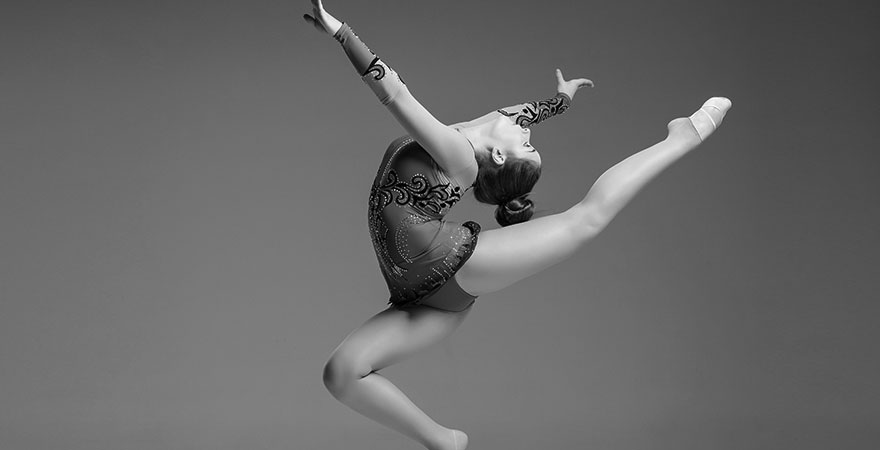The History of Gymnastics – Where and How It Started
Gymnastics sports involves the systematic performance of exercises using rings, bars, and other tools to either compete or improve your body strength, increase agility, master coordination of your body parts and better physical conditioning. Gymnastics is an ancient Greek word which means to exercise naked. The sport combines physical skills such as body control, strength, with acrobatic skills all performed in an artistic manner. It requires discipline and can be performed by both women and men in local clubs, schools and colleges, and universities
History of Gymnastics
Gymnastics began in Greek in early years of civilization to help body development through exercises such as running, jumping, swimming, throwing, wrestling and lifting weights. Many of the activities were practiced even before the Greeks introduced gymnastics. Ancient Greece valued physical fitness and both men and women would perform the vigorous exercises. After the Romans conquered Greece they made gymnastics become a formal sport and practiced in gymnasiums for warfare. However, as the Romans declined in Greece the number of people who played gymnastics greatly reduced and only tumbling become a form of entertainment.
Modern Gymnastics
In 1774 Johann Bernhard Basedow began including physical exercise and other instructions in the curriculum of his school Dessau Saxony. That led to the modernization of the sport and made German countries rank top in the sports. Friedrich Ludwig Jahn of Germany is considered the father of modern as he developed sidebars, parallel bars, balance beams, horizontal bars pommel horse and the jumping events in the 1700’s. The pommel horse resulted in several fatal accidents and if you are wondering which gymnastic equipment wasn’t used. It’s the pommel horse which resulted in paralysis and death of the players. In 1800 Gymnastic grew rapidly in Germany and Sweden. Gret muth from Sweden developed a gymnastic by adding graceful and rhythmic movements to the sport. In 1811, Jahn Schools was opened in Berlin to promote this version of the sport and later many clubs were formed in Europe and England. Dr. Dudley Allen Sargent introduced the sport to the united states during the civil war and he taught the sport in several universities. Dr. Dudley is accredited with developing more than 30 items such items that were used to play the game. In the year 1880, the European immigrants who moved to the united states also taught the Americans how to play the game. After that clubs such as Turnverein and sokols groups were formed with gymnast being referred to as turners at the time. Modern gymnastics didn’t include weightlifting and wrestling but laid emphasis on the rivalry.
Competition
In 1896 during the first Olympic games, the men’s gymnastics was scheduled. The gymnastics were part of the Olympic games agenda until 1924. In 1936 the women Olympic gymnastics competition began, and it was an all-around game. In 1952 the gymnastics competition was officially added to the Olympic games. The Olympic games were dominated by men from Germany, Sweden, Italy, and Switzerland. However, in late 1950, the leading male gymnast came from Japan, the Soviet Union, and Eastern Europe. Among the performances that made gymnastics famous include Olga Korbut from the Soviet Union who participated in 1972 and Nadia Comaneci from Romania who participated in the 1976 Olympics.
The performance of the two gymnasts was televised and gave the sport the publicity that lacked before then. Many countries such as the USSR, Japan, West Germany, and the Eastern Europe nations began to advertise and promote the sport especially among women.
The international competition currently has six events for men, and four for men. The men’s event includes rings, parallel bars, horizontal bars, pommel-horse, long horse and floor tumbling exercises. These exercises help the men build upper body strength, become flexibility and acrobatic. The main women events are vaulting horse, balance beam, uneven bars and floors exercise. During the exercises, music instruments are played. The gymnastics exercises and games are characterized by graceful, dance-like movements and acrobatic skills. During competitions in the united states, trampoline and tumbling are included. The flooring for tumbling is made of acrobatic elements and other materials to ensure safety and flexibility.
Each team is made of six gymnasts and each team member performs on each equipment. The team with the highest points wins the game. The gymnast with the highest point after performing on all equipment is also awarded. There is also a competition to select the winner for each equipment.
Women have what is known as rhythmic gymnastics which began in 1984. In the rhythmic gymnast, the women perform gracefully, dancing movements guided by music accompaniment while holding a ball, hoop, rope, ribbon or clubs. The exercise involves performing individually or in teams of six.
Gymnast scoring
The winners of gymnastic sports are either individuals or teams. Each team member is expected to complete several types of moves on each equipment. Points are awarded to each participant from a scale of 0 to 10 with 10 being the best. There are four judges and although judging is subjective there are guidelines that the judges follow to ensure results are not biased. Gymnast performs the most difficult task in the most graceful way hoping to impress the judges with the mastery of the exercises and sport.

